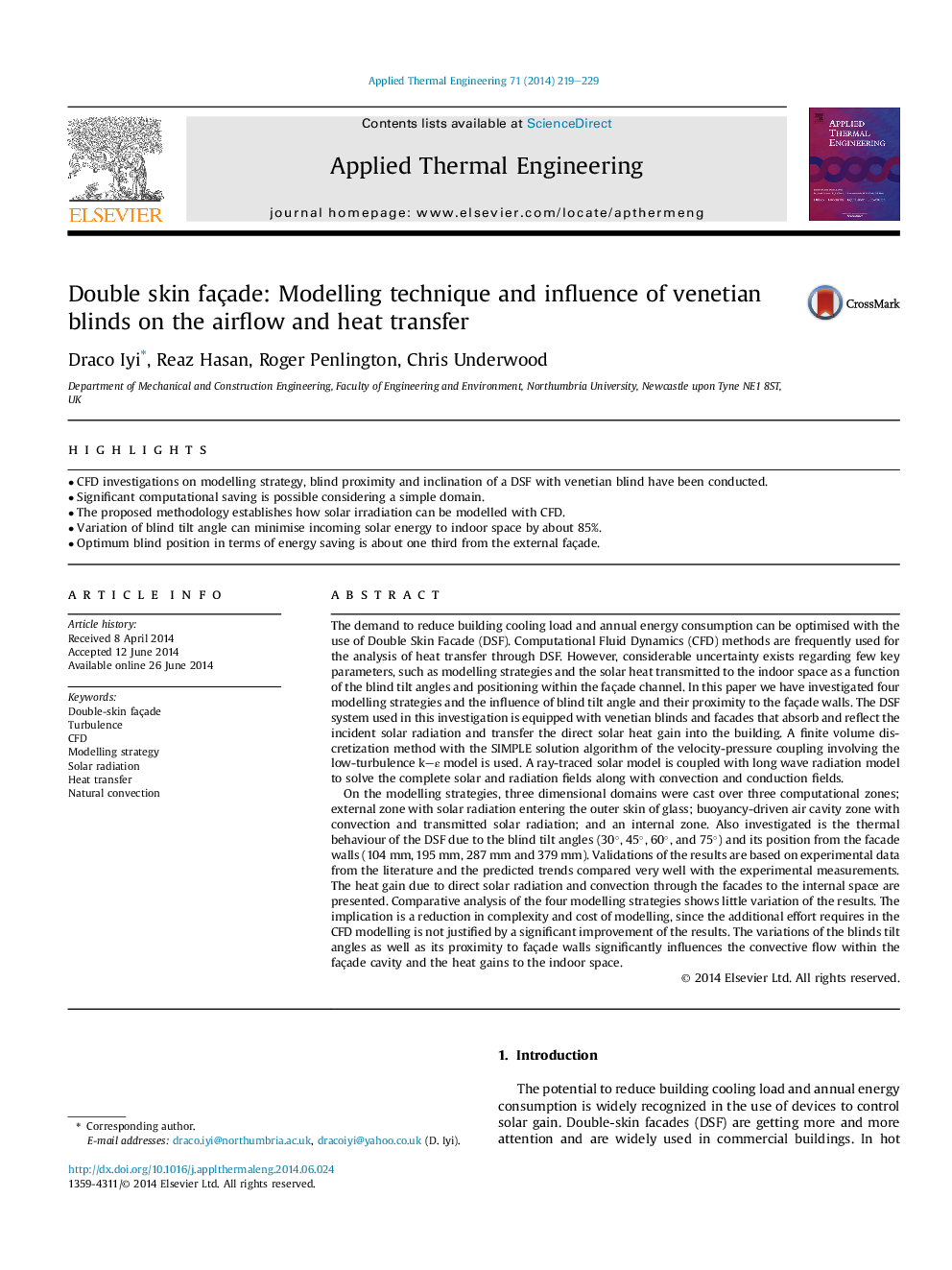| کد مقاله | کد نشریه | سال انتشار | مقاله انگلیسی | نسخه تمام متن |
|---|---|---|---|---|
| 646100 | 884554 | 2014 | 11 صفحه PDF | دانلود رایگان |
• CFD investigations on modelling strategy, blind proximity and inclination of a DSF with venetian blind have been conducted.
• Significant computational saving is possible considering a simple domain.
• The proposed methodology establishes how solar irradiation can be modelled with CFD.
• Variation of blind tilt angle can minimise incoming solar energy to indoor space by about 85%.
• Optimum blind position in terms of energy saving is about one third from the external façade.
The demand to reduce building cooling load and annual energy consumption can be optimised with the use of Double Skin Facade (DSF). Computational Fluid Dynamics (CFD) methods are frequently used for the analysis of heat transfer through DSF. However, considerable uncertainty exists regarding few key parameters, such as modelling strategies and the solar heat transmitted to the indoor space as a function of the blind tilt angles and positioning within the façade channel. In this paper we have investigated four modelling strategies and the influence of blind tilt angle and their proximity to the façade walls. The DSF system used in this investigation is equipped with venetian blinds and facades that absorb and reflect the incident solar radiation and transfer the direct solar heat gain into the building. A finite volume discretization method with the SIMPLE solution algorithm of the velocity-pressure coupling involving the low-turbulence k–ε model is used. A ray-traced solar model is coupled with long wave radiation model to solve the complete solar and radiation fields along with convection and conduction fields.On the modelling strategies, three dimensional domains were cast over three computational zones; external zone with solar radiation entering the outer skin of glass; buoyancy-driven air cavity zone with convection and transmitted solar radiation; and an internal zone. Also investigated is the thermal behaviour of the DSF due to the blind tilt angles (30°, 45°, 60°, and 75°) and its position from the facade walls (104 mm, 195 mm, 287 mm and 379 mm). Validations of the results are based on experimental data from the literature and the predicted trends compared very well with the experimental measurements. The heat gain due to direct solar radiation and convection through the facades to the internal space are presented. Comparative analysis of the four modelling strategies shows little variation of the results. The implication is a reduction in complexity and cost of modelling, since the additional effort requires in the CFD modelling is not justified by a significant improvement of the results. The variations of the blinds tilt angles as well as its proximity to façade walls significantly influences the convective flow within the façade cavity and the heat gains to the indoor space.
Journal: Applied Thermal Engineering - Volume 71, Issue 1, 5 October 2014, Pages 219–229
